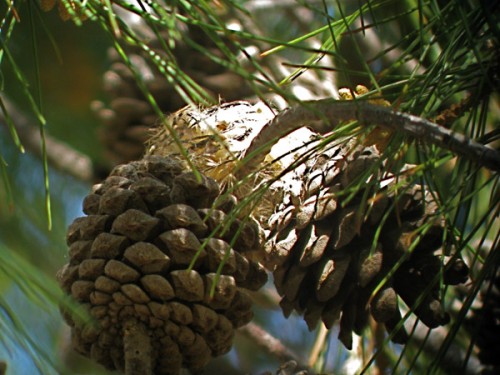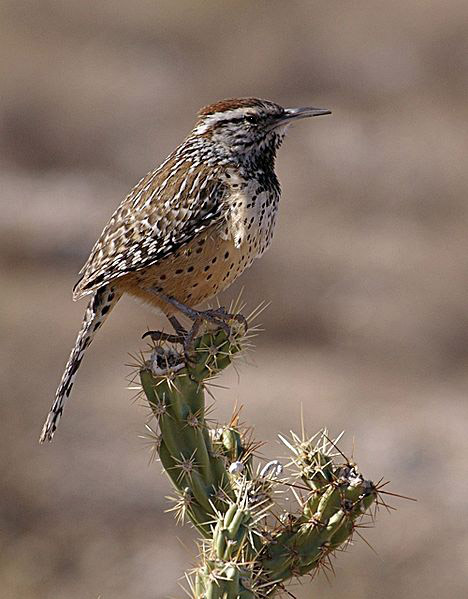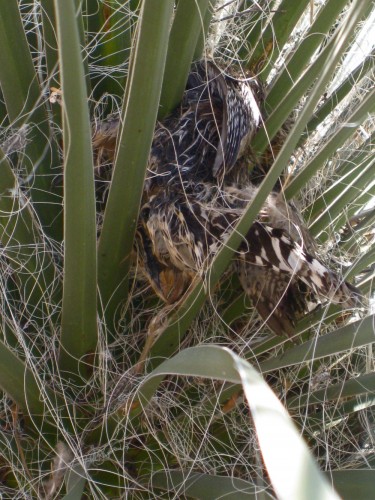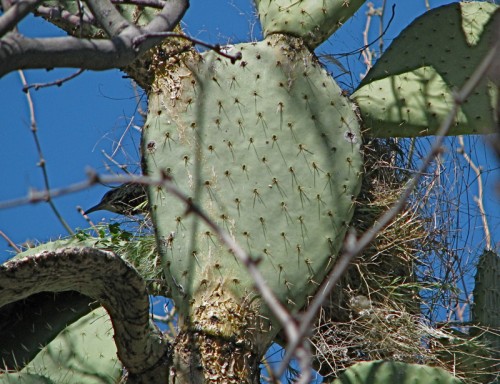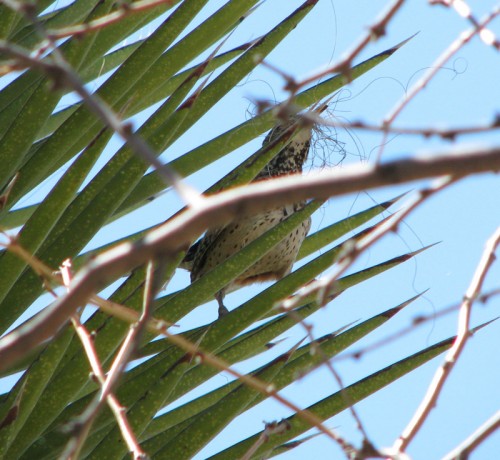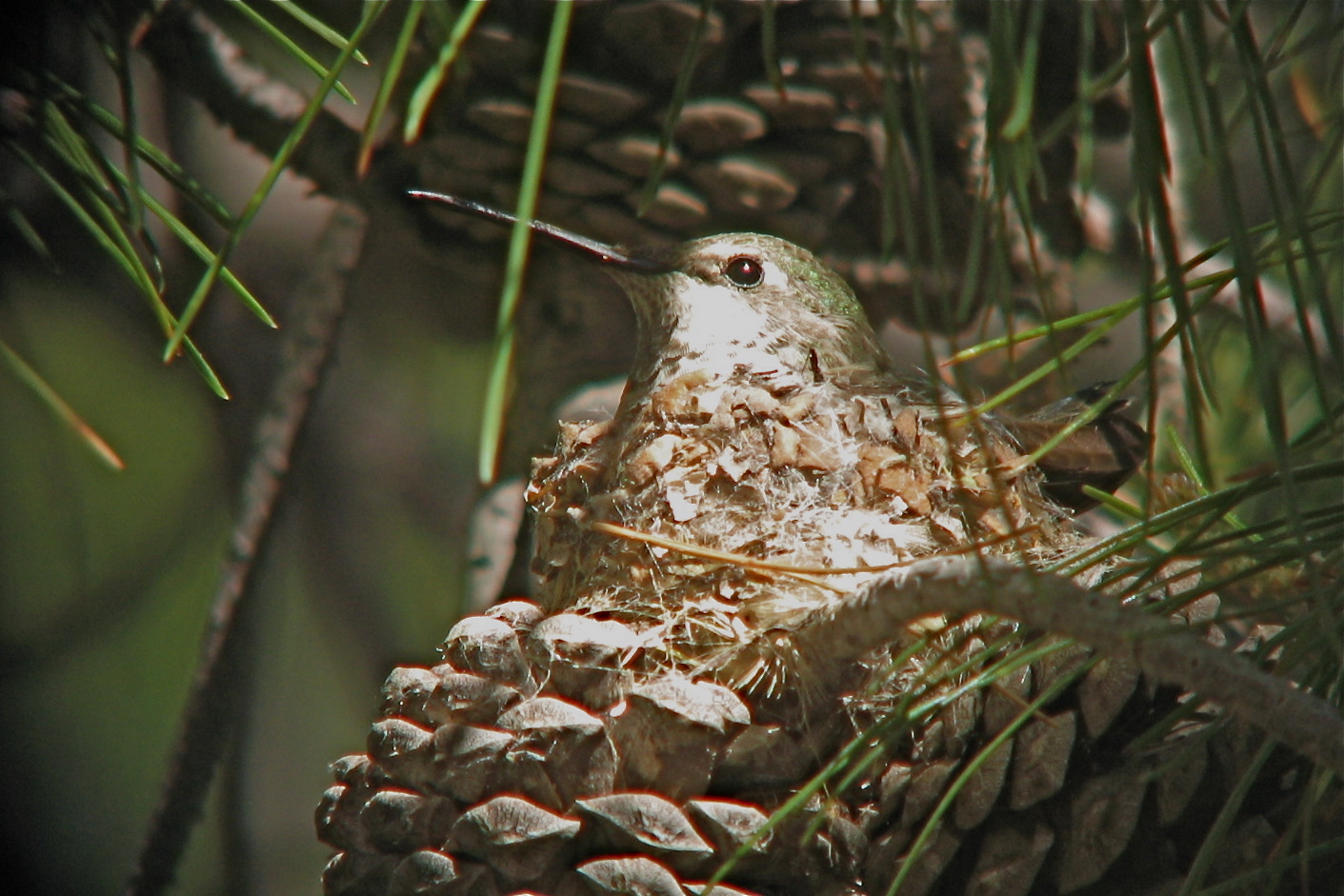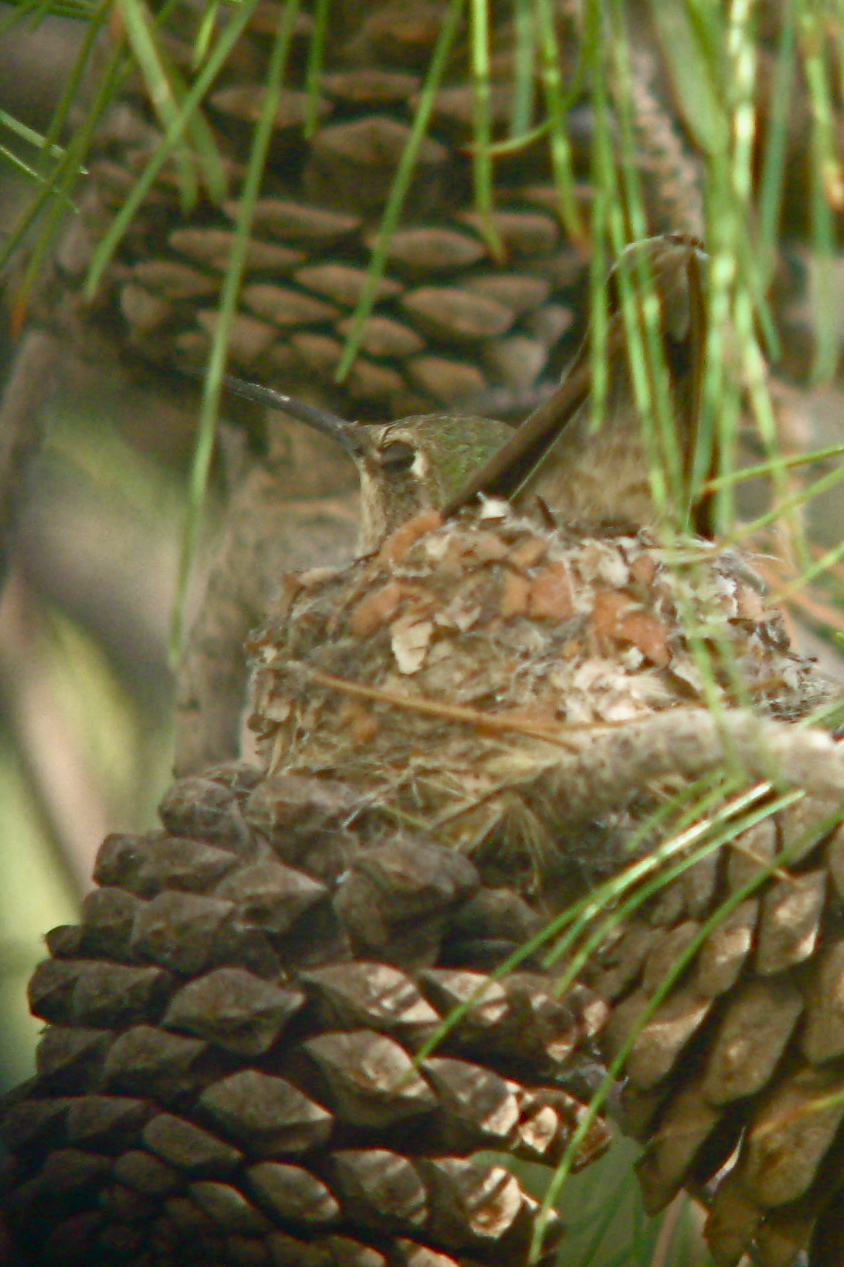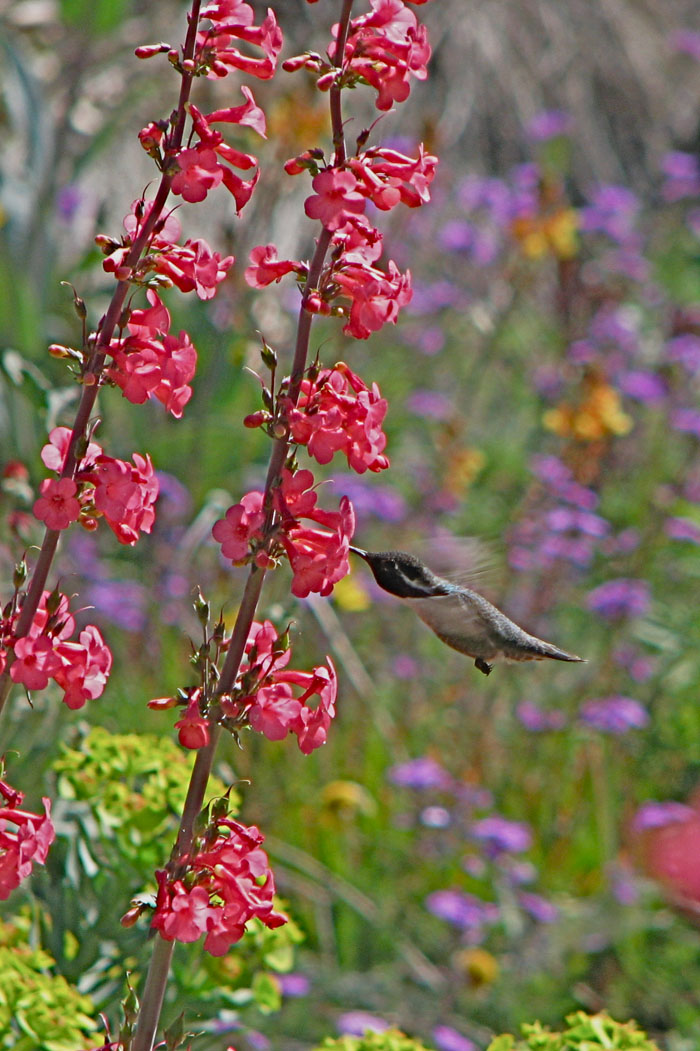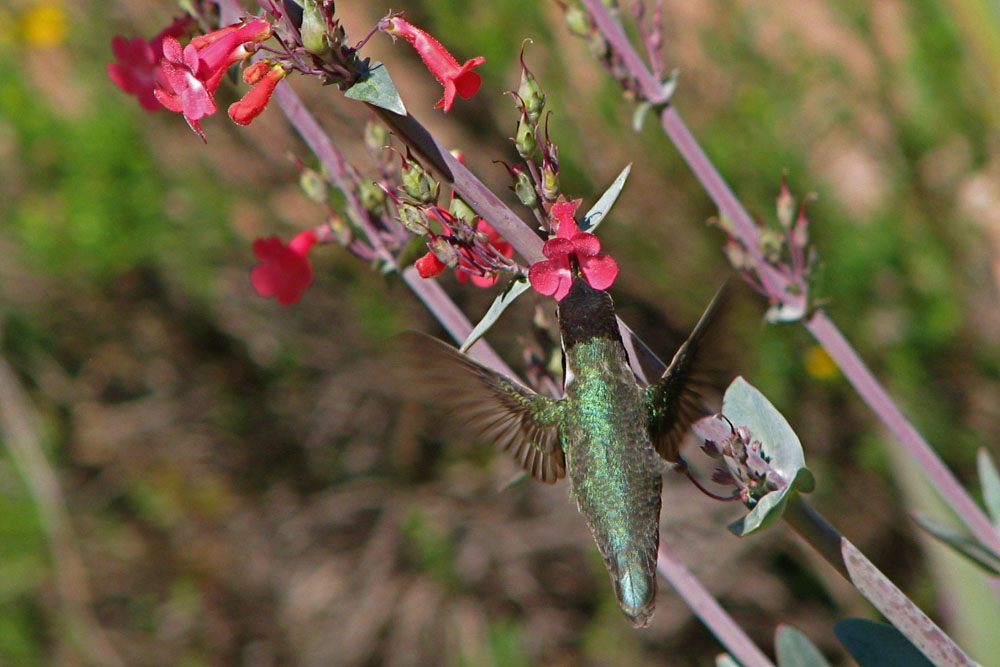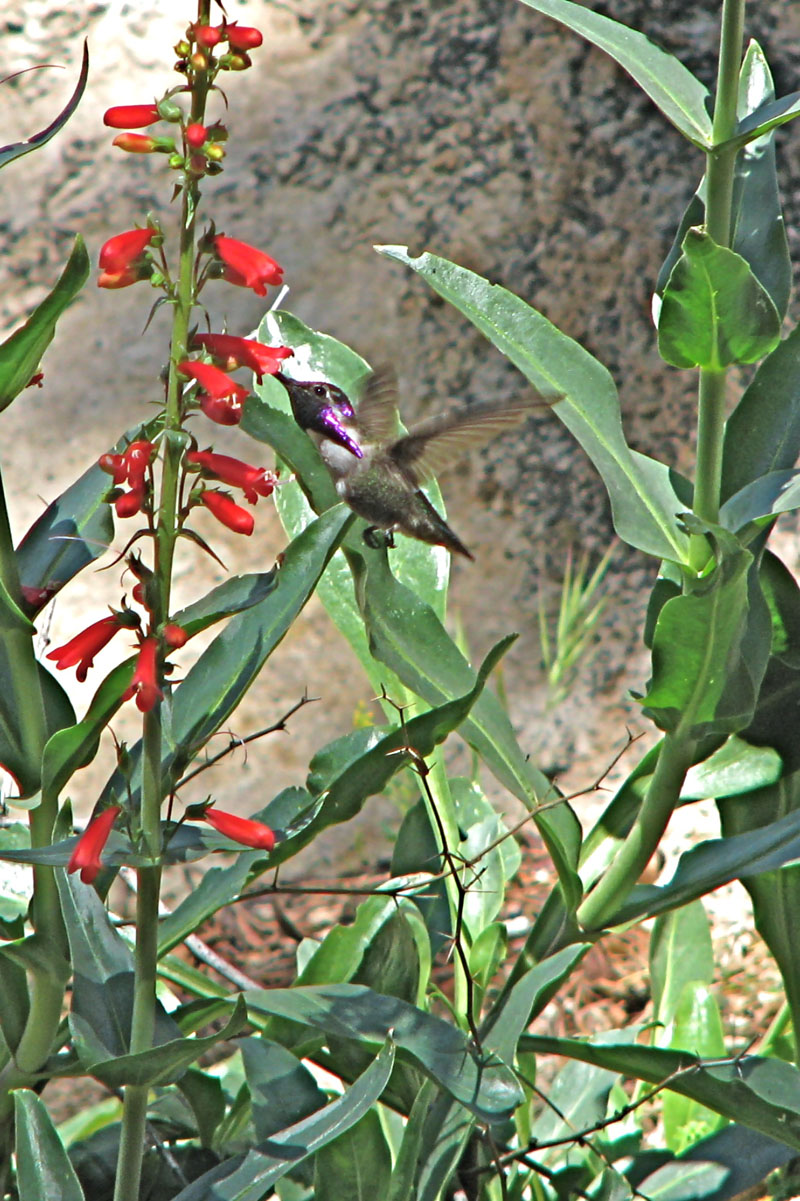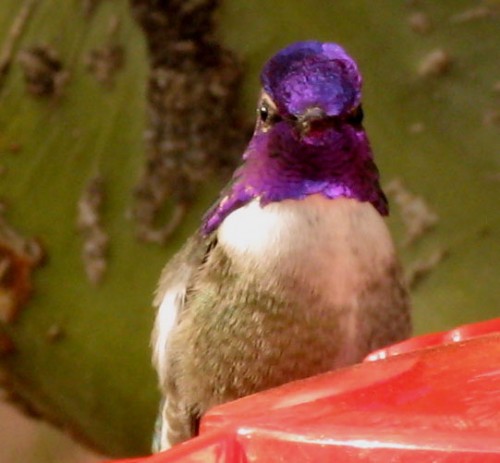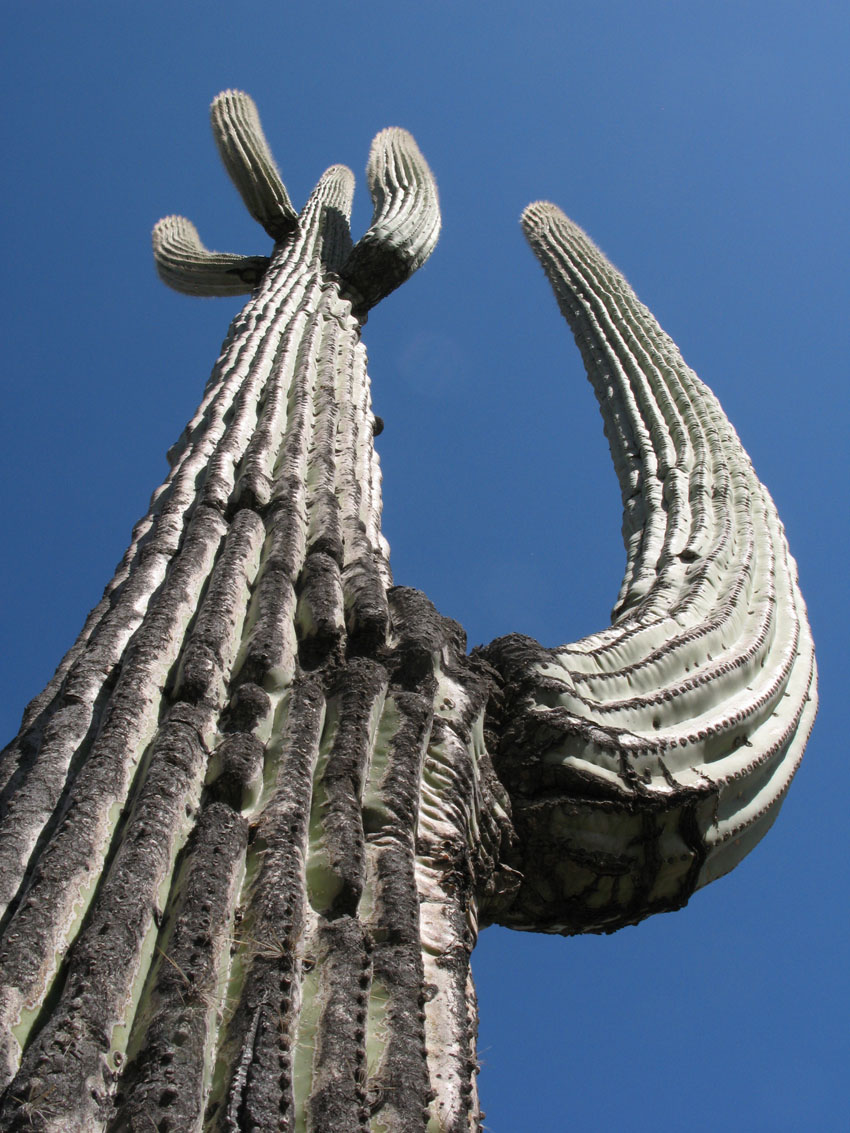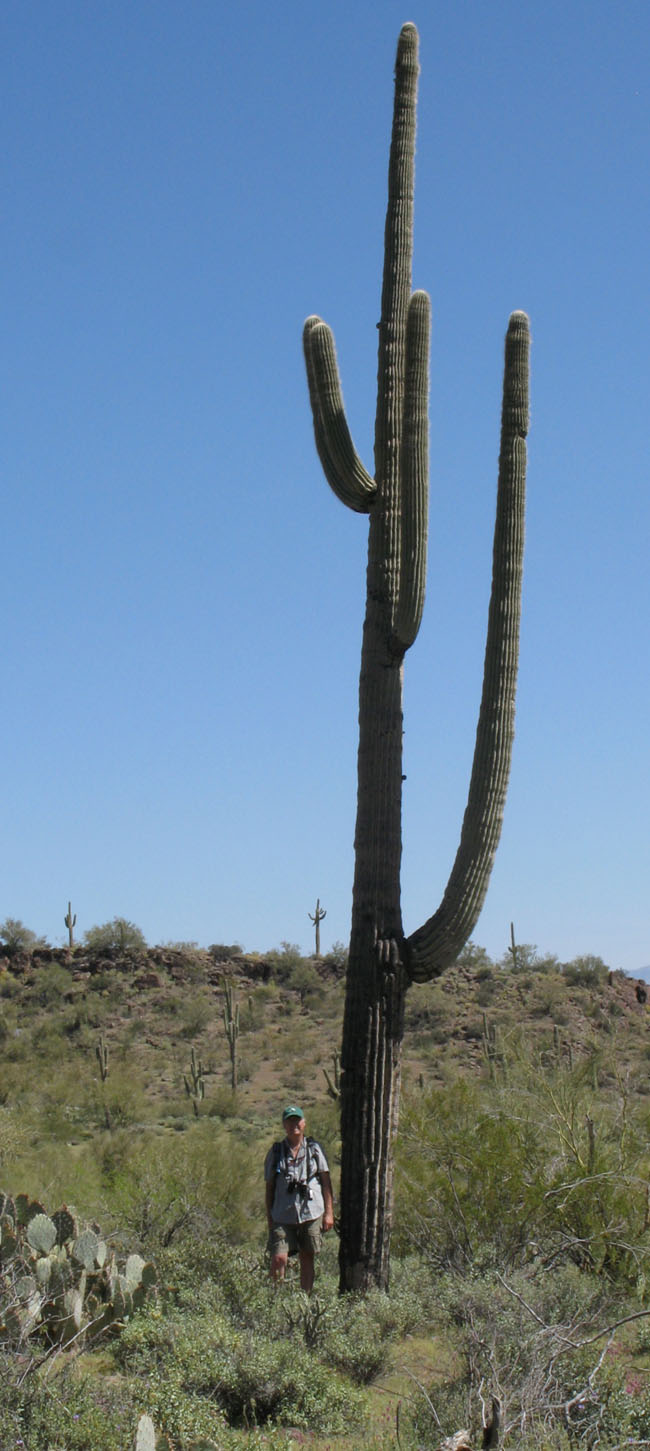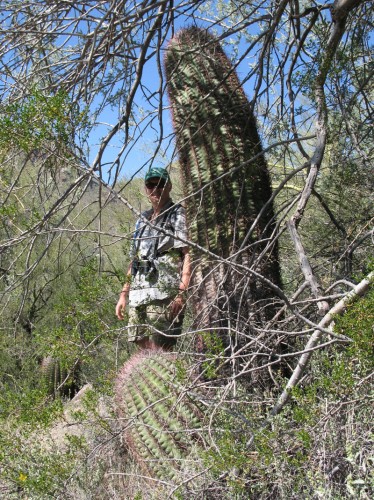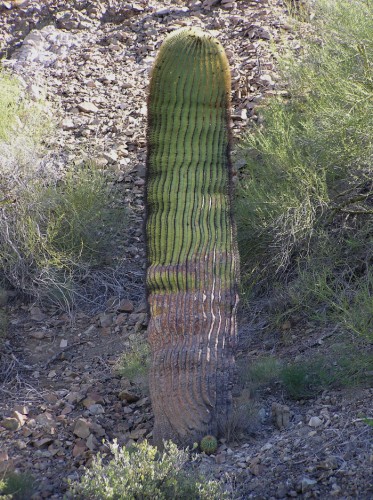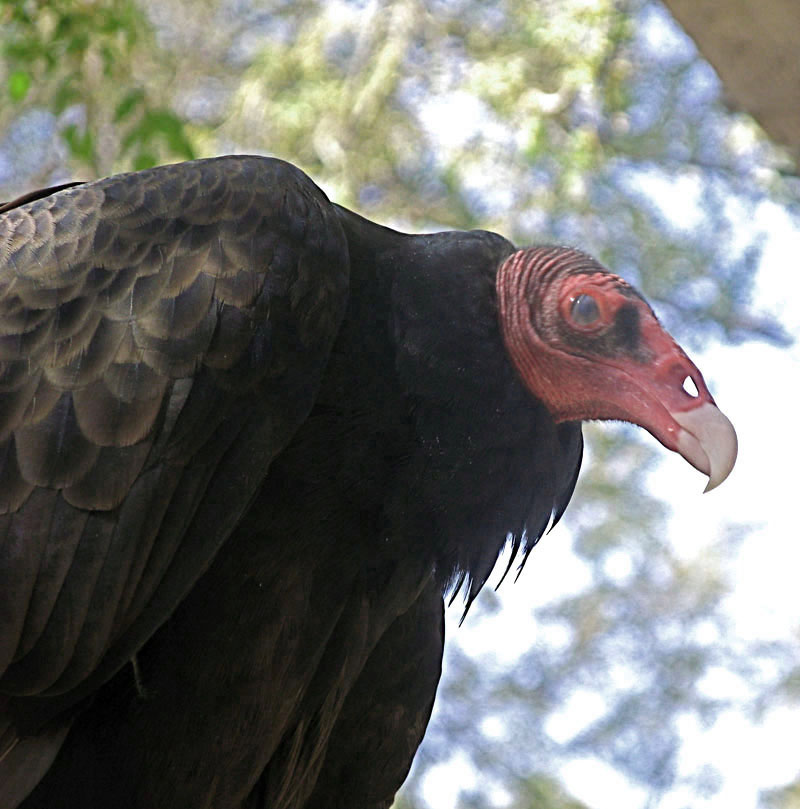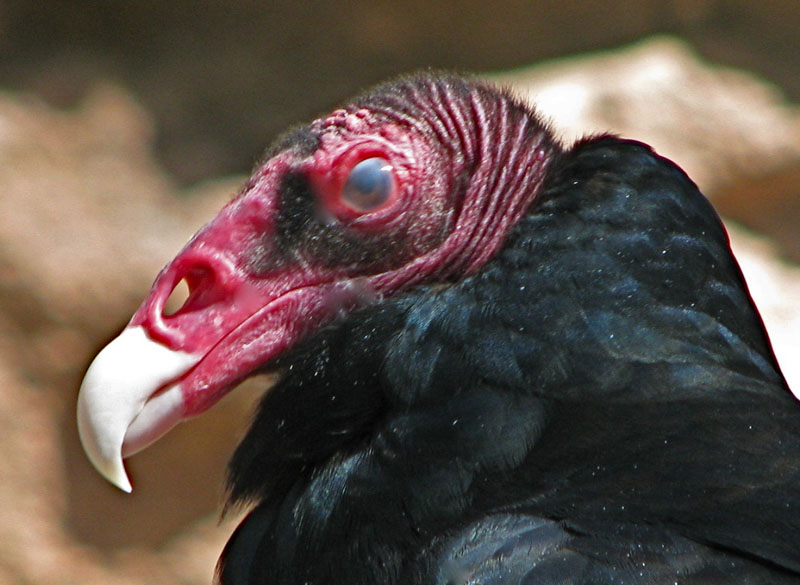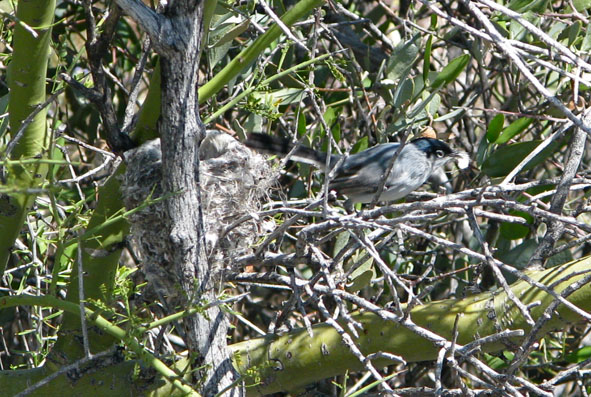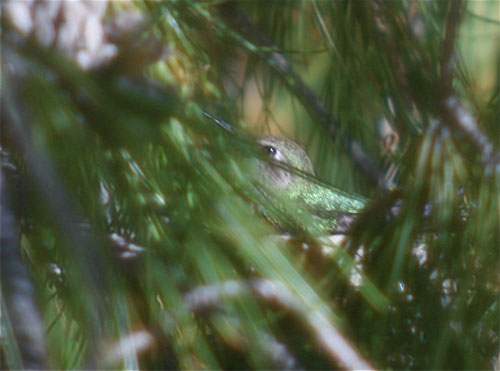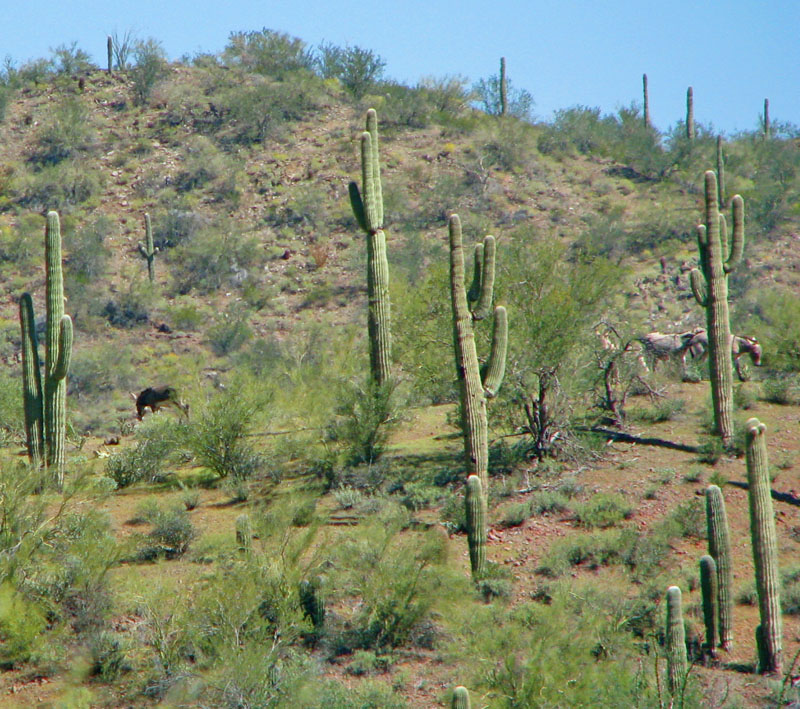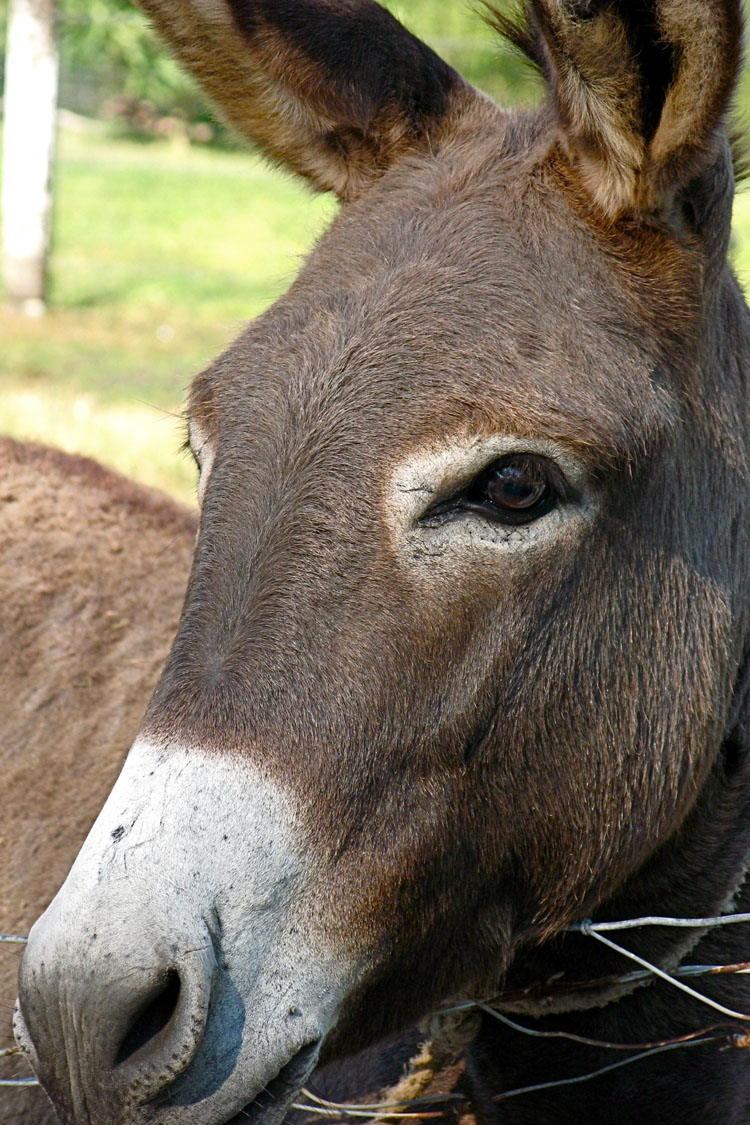Nidification: Cloacal dexterity is next to godliness
The Anna’s Hummingbird Hen’s behavior has mystified me for the last few days. What I see when the Hen is gone: an empty nest, no nestling activity (after that first exciting view). Then when the Hen returns, she immediately sits tight; no feeding. Wouldn’t you expect her to return and feed nestlings, if there were any? And yet there’s no doubt there is/are nestlings in the Nid; I saw it/them. Frankly, these have been anxious days for me. But, figuring the Hen knows what’s what with her Nidlings, I just hung loose and tried not to imagine an inexperienced hen sitting on the corpses of un-fed young ‘uns. Ew.
And? Then Sunday evening, a warm, calm, acacia-fragrant evening while it was still light, I looked down on the Nid from the upstairs window, and saw Fascinating Behavior. The first was a definite look at a dark, fuzzy head with a now orange-yellow bill restlessly moving in and out of sight from the depths of the Nid. This was very exciting. Then nothing for several minutes — the Hen was away for quite a while on this outing. It gave me a chance to study the inner edge of the far side of the Nid, and think how clean it was: no poop. I realized I’d never seen a hummer carrying a white fecal sac away from a nest, like many songbirds do to keep their nests clean: food in, fecal sacs out. I wondered if a nestling hummer produced a fecal sac that was just so small I’d never noticed. Just then a gray fuzzy lumpish shape appeared over the rim: a second nestling!… but, no — it has no face? What…? Then: SPLORTCH! Like a jet of ‘baccy juice from the lips of a cartoon hillbilly, a tiny projectile squirt came shooting over the rim of the nest and arced towards the ground. So that’s how it’s done! No fecal sacs here for mom to cart away, just a butt-skywards and a quick squeeze, and business has been taken care of.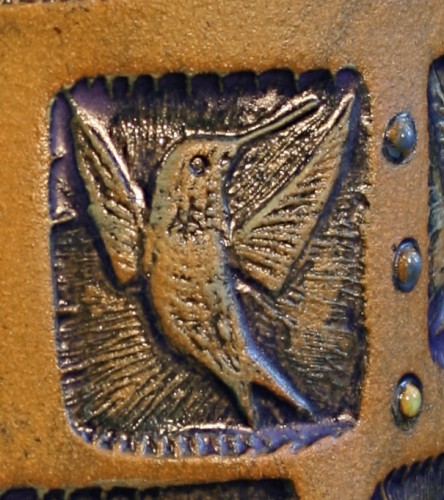
The second event was the Hen returning. And, to my relief and fulfilled expectation, she perched on the edge of the nest and pointed her beak downward. Just like in the nature films, two little heads rose up to meet her, and she poked her bill down one gullet and then the other, dispensing yummy liquid Gnat-in-Nectar stew to each Nidling in turn, the bigger one going first.
To the right is a close-up of an Anna’s hummingbird stamp on a Three Star Owl “Hummingbirds of Arizona” cylindrical vessel. (Both photos: A.Shock)
No pictures of any of this excitement. I’ll try, but I’ve decided to paper over the window until fledging. It would be awful if our voyeurism, or the cats, who love to sit and “read the backyard newspaper” from this window, caused her to abandon the nest. I’ll leave a flap to peek through, like an impromptu blind, and maybe before long I’ll manage to get a photo. The best I can do is leave you with this link to someone else’s photo of exactly what I saw.

